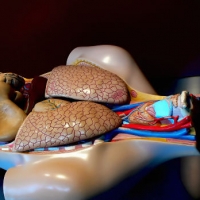3D Printing Software Capabilities Just Keep Growing

It’s hard to believe that 3D printing has been around for twenty years. As the technology was perfected in the early days, not too much headline-grabbing news was made as the objects being printed were various geometric shapes, with little more than a “hey, neat” value.
That’s all changed in the last few years, and more advancements in 3D printing software have been made in 2012 than ever before. Vinyl records were both made this year, albeit with some limitations when compared to their original models. Developers and engineers made amazing strides in 2012 by reducing the cost of the printers and their materials, and by enabling the machines to produce previously unimagined products.
But perhaps the greatest accomplishment in the 3D printing world—and one that understandably is still in its very early stages—is replacing the printer's plastic ink with what’s being called living ink to produce body parts including bones, cartilage, and even organs. The value of this technology in terms of advanced medical research and one day full organ transplants is truly immeasurable.
How does 3D printing software work? Surprisingly, it’s not that complicated. Using computer-aided design (CAD), 3D images are sliced into minutely thin layers or sheets, and the printers print those layers, one by one on top of each other from the ground up. The result is a nearly identical replica of an original, physical model.
CAD originator Autodesk has teamed up with Organovo Holdings, who already makes human tissue, to rapidly advance the capabilities of both companies. Organovo’s CEO Keith Murphy recently told the New York Times that the ability to create an entire, functioning organ was still “likely many years away” but even the organ “slices” that they’re able to create today are opening up a world of possibilities for researchers.
As is the case with a growing number of software breakthroughs, especially at the medical level, many organizations are turning to open-source solutions for faster, more innovative, and at times less costly delivery. The medical field has its own team of dedicated hackers, Biocurious, whose mission is that “innovations in biology should be accessible, affordable, and open to everyone.”
Year by year, we get closer to Biocurious’ dream because it’s the dream of hackers, developers, doctors, and patients alike.

